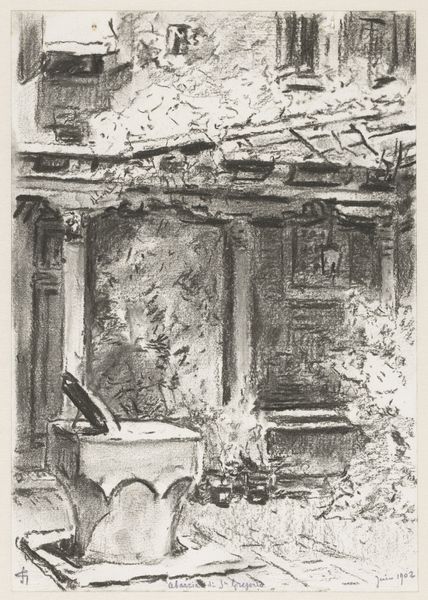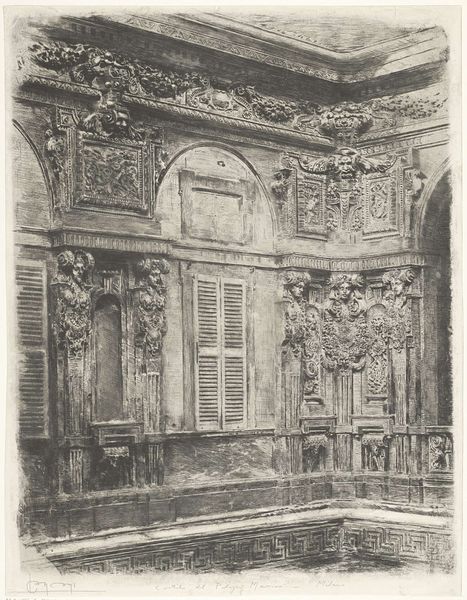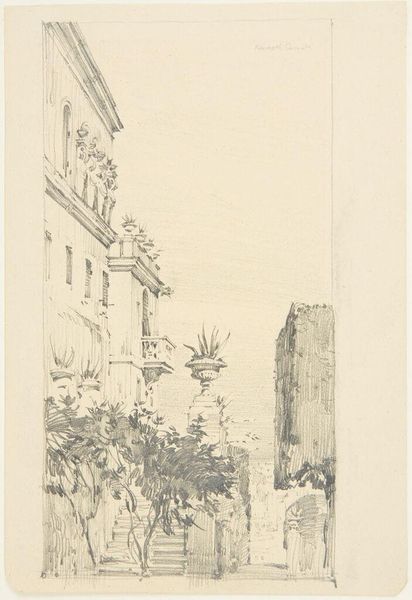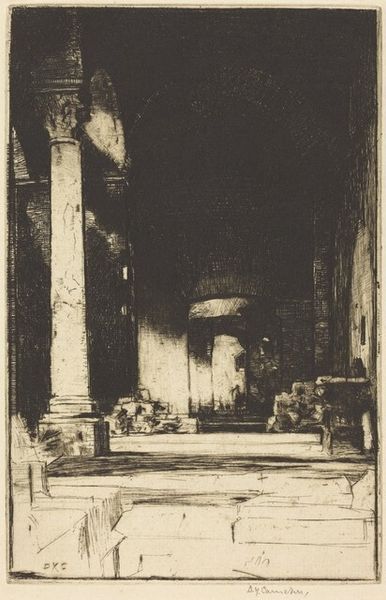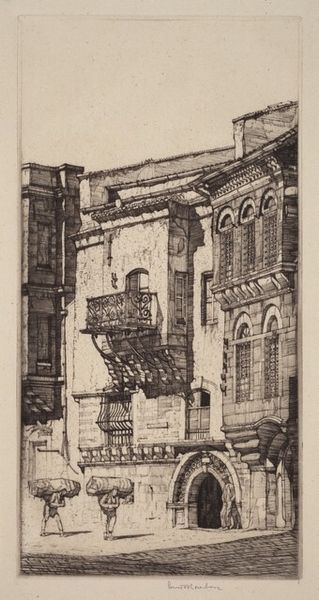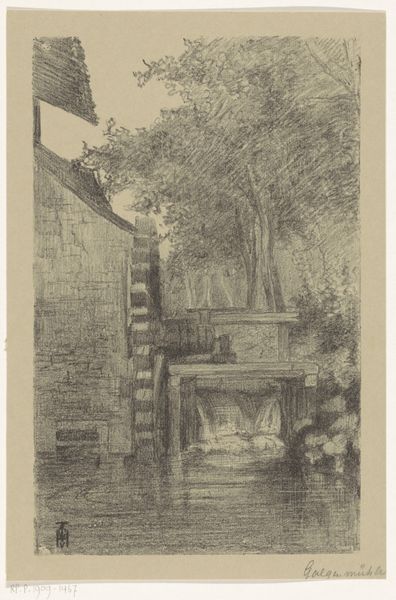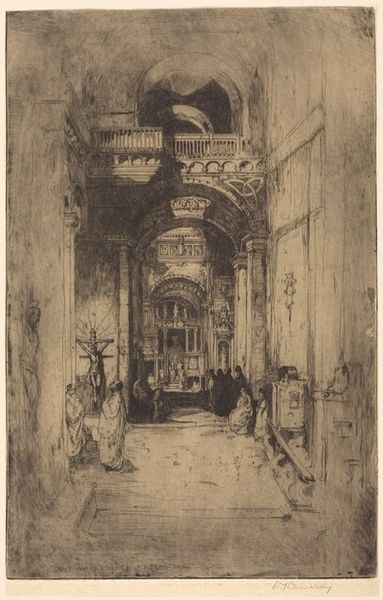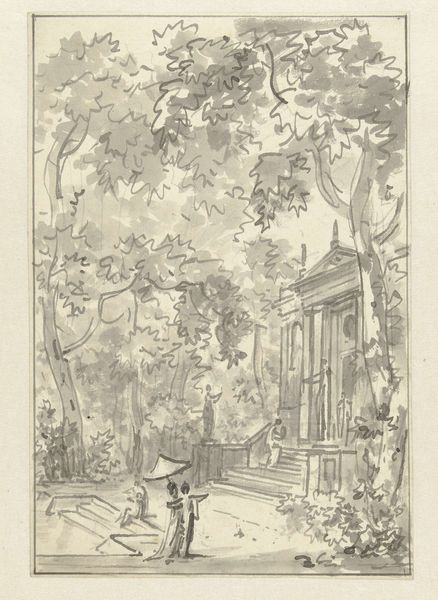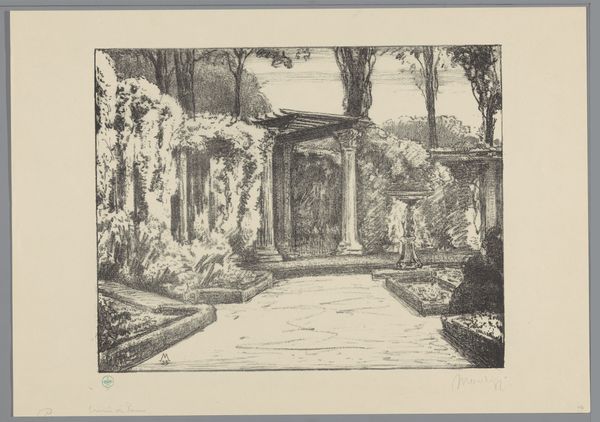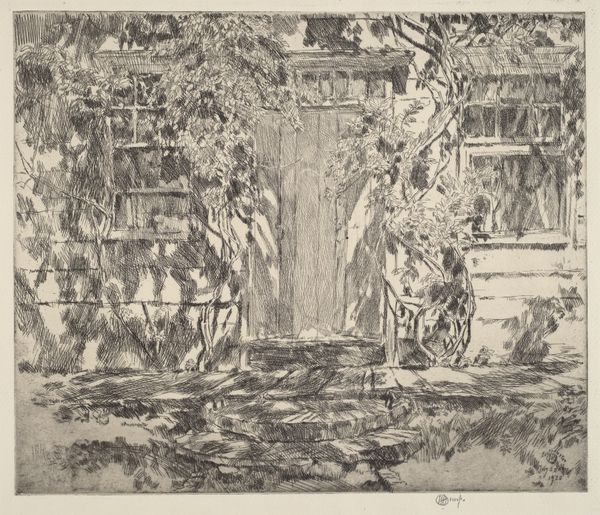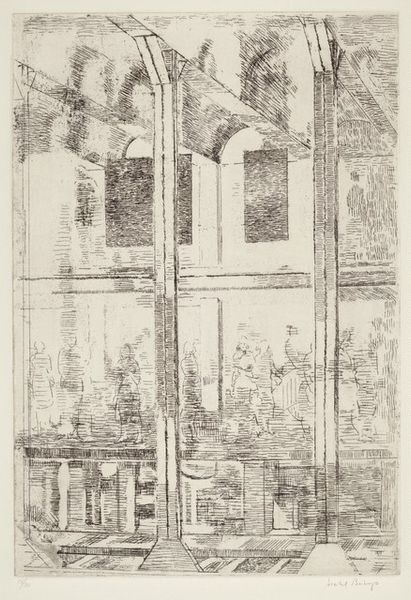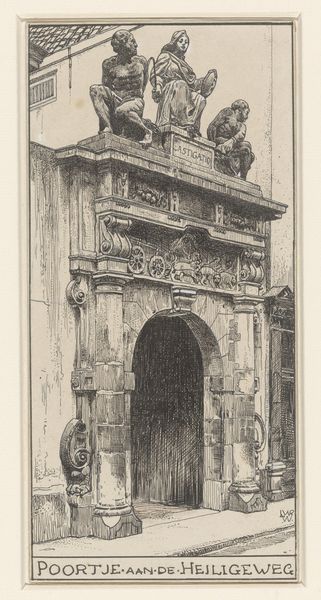
Dimensions: plate: 24.13 × 11.91 cm (9 1/2 × 4 11/16 in.) sheet: 30.48 × 17.62 cm (12 × 6 15/16 in.)
Copyright: National Gallery of Art: CC0 1.0
Curator: Here we have Ernest D. Roth's "San Gregario, Venice," created in 1905. The artwork is an etching, a type of printmaking, and it presents a Venetian cityscape. Editor: My first impression is that it's intensely architectural. The columns, arches, and the layering of the building’s façade all create a striking sense of depth and formal balance. Yet, the overall effect is also quite delicate, almost ethereal. Curator: Absolutely. Venice, particularly in this era, served as a crucial nexus for European trade and cultural exchange. An etching like this one highlights not only the city's beauty but also its identity as a site of historical power and complex socio-economic dynamics. The decay we see speaks to its history, suggesting themes of decline. Editor: The lines used in the etching technique, though, bring out that atmospheric effect. See how they play with light and shadow? They almost dissolve the solid structures into a play of textures. Roth’s method really focuses our attention on those details. Curator: In addition to its formal components, note also the strategic inclusion of plants and vines. These natural elements can symbolize a return to nature in opposition to industrial expansion, while also connoting resilience and enduring life in contrast to the architectural decay. Editor: I'd agree, and considering Roth’s contemporary engagement with Impressionism, there's definitely an attention to how ephemeral visual details combine to evoke something greater. Curator: So, in engaging with this work, viewers should recognize the intersections between urbanization and nature, the legacy of colonial economies, and the subtle but poignant dialogues happening across the image. Editor: Precisely. What struck me originally as a beautiful, balanced, though rather understated depiction, becomes richer as we dissect Roth’s meticulous artistry and consider the artwork's embedded context.
Comments
No comments
Be the first to comment and join the conversation on the ultimate creative platform.
